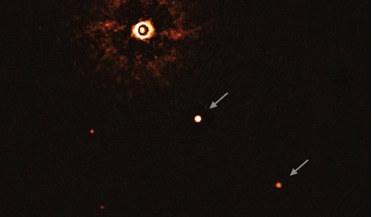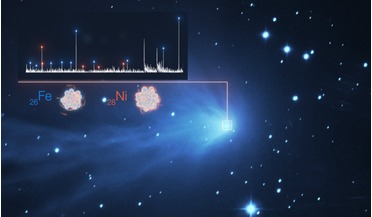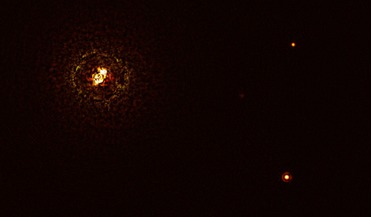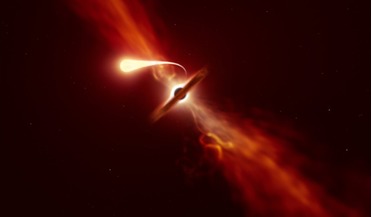 22 July 2020
Astronomers capture the first ever image of a multi-planet system around a Sun-like star
22 July 2020
Astronomers capture the first ever image of a multi-planet system around a Sun-like star
... planets are part of the star’s system. Further observations of this system, including with the future ESO Extremely Large Telescope (ELT), will enable astronomers to test whether these planets formed at their current location distant from the star...
 23 July 2021
Astronomers detect a disk where exoplanet moons could be forming
23 July 2021
Astronomers detect a disk where exoplanet moons could be forming
... by PDS 70c. To get an even better look at the system, the team will have to wait until ESO's Extremely Large Telescope (ELT), which is currently under construction on Cerro Armazones in the Chilean Atacama desert, becomes operational. Once it does...
 19 May 2021
Scientists unexpectedly find heavy metal vapour in comets throughout our Solar System, and beyond
19 May 2021
Scientists unexpectedly find heavy metal vapour in comets throughout our Solar System, and beyond
... not clear what this material might be, advances in astronomy — such as the Mid-infrared ELT Imager and Spectrograph (METIS) on ESO’s upcoming Extremely Large Telescope (ELT) — will allow researchers to confirm the source of the iron and nickel atoms...
 10 December 2021
Extreme exoplanet changes the picture about massive stars as planet hosts
10 December 2021
Extreme exoplanet changes the picture about massive stars as planet hosts
... it was not recognised as a planet at the time. With upgrades planned for the VLT, and when ESO’s Extremely Large Telescope (ELT) starts observations later this decade, astronomers may be able to unveil more about this planet’s formation and...
 12 October 2020
Rarely detected star shredding event caught in unprecedented detail
12 October 2020
Rarely detected star shredding event caught in unprecedented detail
... gravity environments around them. More light could soon be shed on these relatively rare events when ESO’s Extremely Large Telescope (ELT) starts operating this decade. Nicknamed “the world’s biggest eye on the sky”, this revolutionary new ground...
 06 April 2020
Planets can form second atmospheres rich in CO, new study shows
06 April 2020
Planets can form second atmospheres rich in CO, new study shows
... planets C/O ratio when future observatories such as James Webb Space Telescope (JWST), the Extremely Large Telescope (ELT), and the Atmospheric Remote-sensing Infrared Exoplanet Large-survey (ARIEL) have the ability to look at spectra for many...